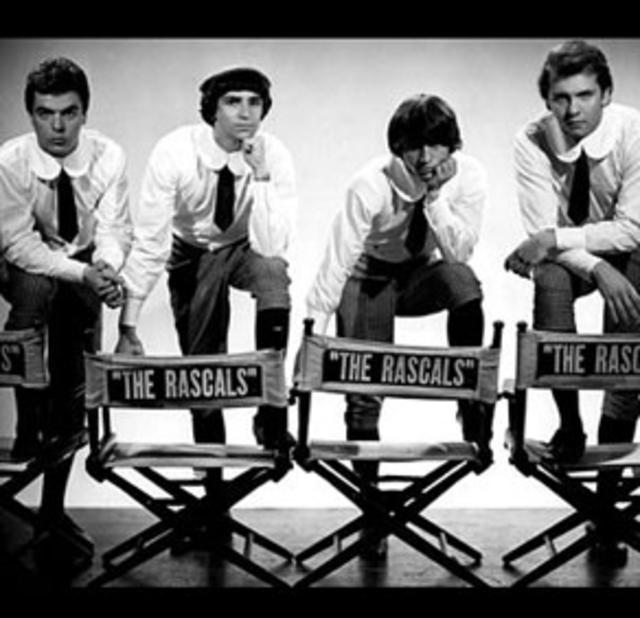The (Young) Rascals

The Rascals (a.k.a. the Young Rascals) were paragons of "blue-eyed soul"-that is, soul and R&B music by white performers. Other well-known purveyors include the Righteous Brothers, Steve Winwood, Van Morrison and Joe Cocker. However, no one among them had more commercial clout in the Sixties than the Rascals. The group built its sound around Felix Cavaliere's Hammond B-3 organ and the soulful lead vocals of Cavaliere and Eddie Brigati. In Cavaliere's words, "Marvin Gaye's voice, Ray Charles' piano, Jimmy Smith's organ, Phil Spector's production and the Beatles' writing-put them all together and you've got what I wanted to do." The Rascals were masters of the three-minute single: sustained bursts of energized pop-soul made to be blasted over transistor radios or danced to at parties and discotheques. Three of the four members had played in Joey Dee and the Starliters (of "Peppermint Twist" fame), and all could legitimately claim backgrounds in R&B.The Rascals formed in early 1965 when Cavaliere, Brigati and guitarist Gene Cornish left the Starliters and recruited drummer Dino Danelli. Manager Sid Bernstein got them signed to Atlantic Records after the group turned heads at Manhattan's Phone Booth nightclub. Their first single, "I Ain't Gonna Eat Out My Heart Anymore," stalled at #52 but its followup, "Good Lovin'," went to Number One in March 1966. Several strong pop-R&B singles followed, including "You Better Run" (#20) and "I've Been Lonely Too Long (#16). Then the Rascals underwent a radical shift in direction.Inspired by sweeping changes in the youth culture of the Sixties, they took a mellower, more atmospheric approach to their music. Their intuitions proved sound when "Groovin'," a soulful reverie about "groovin' on a sunny afternoon," shot to #1 in the spring of 1967. By the end of the year, the Rascals were venturing into psychedelia with effects-laden songs like "It's Wonderful" (#20). This was their last single to be credited to the Young Rascals. They reverted to their original name, the Rascals, with the release of "A Beautiful Morning" in 1968. They also switched from juvenile Lord Fauntleroy onstage outfits to a more mature, individualistic style of dress.The Rascals' biggest hit, "People Got to Be Free," was co-written by Cavaliere and Brigati. While many thought the song was related to the assassinations of Martin Luther King Jr. and Robert F. Kennedy, it was recorded before the latter's death. In fact, it was partly a reaction to an ugly encounter during which a group of locals threatend the long-haired group after their tour vehicle broke down in Fort Pierce, Florida. It topped the charts for five weeks and inspired a followup single, "A Ray of Hope," written for Teddy Kennedy. At this juncture, the Rascals began focusing on albums instead of singles, as was typical of the time. A more experimental approach resulted in records like Freedom Suite, a double album from 1969. The group also took a principled stand for integration, insisting that any bill they perform on include black artists.By the early Seventies, the Rascals-minus Brigati and Cornish, and with the addition of several new members-had moved from Atlantic to Columbia Records and from punchy pop-soul to mellow jazz-rock. This shift marked a continuing process of evolution for a band that had been pop-soul sharpshooters with an unerring eye on the Top Forty only a few years earlier. The Rascals last album, The Island of Real, appeared in 1972, and the group disbanded shortly thereafter.